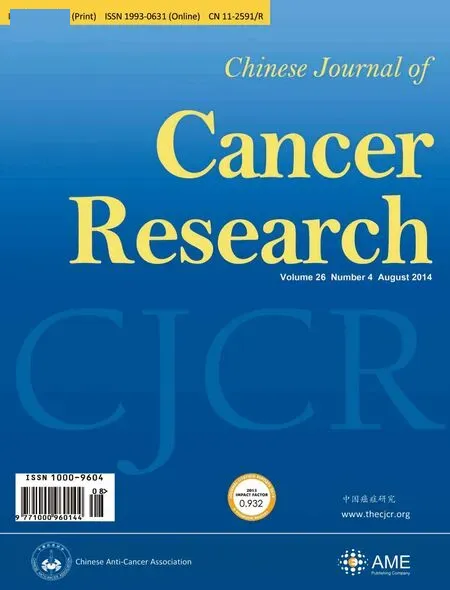Expanding the selection criteria of laparoscopic hepatectomy for hepatocellular carcinoma
Department of Surgery, National Taiwan University Hospital, Taipei, Taiwan, China
Correspondence to: Yao-Ming Wu, M.D. Department of Surgery, National Taiwan University Hospital, No. 7, Chung-Shan South Road, Taipei, Taiwan, China. Email: wyaoming@gmail.com.
Expanding the selection criteria of laparoscopic hepatectomy for hepatocellular carcinoma
Po-Da Chen, Chao-Yin Wu, Yao-Ming Wu
Department of Surgery, National Taiwan University Hospital, Taipei, Taiwan, China
Correspondence to: Yao-Ming Wu, M.D. Department of Surgery, National Taiwan University Hospital, No. 7, Chung-Shan South Road, Taipei, Taiwan, China. Email: wyaoming@gmail.com.
Submitted Jun 24, 2014. Accepted for publication Jun 25, 2014.
View this article at:http://dx.doi.org/10.3978/j.issn.1000-9604.2014.07.01
The introduction of laparoscopic procedures is one of the milestones of surgical innovation over the past few decades. The advantages of minimally invasive approach have been gradually accepted owing to its less postoperative pain, reduced morbidity and faster recovery. Also, since the introduction of laparoscopic approach of liver surgery in 1955 (1), the benefit of the procedure had long been questioned but expected.
The article by Piardi et al., entitled “Laparoscopic resection for hepatocellular carcinoma: comparison between Middle Eastern and Western experience” sought to compare the safety and feasibility of laparoscopic versus open liver resection for hepatocellular carcinoma between Middle Eastern and Western surgeons. To this end, 24 original studies with more than 15 patients were analyzed, while studies from both groups documented similar intraoperative and immediate postoperative outcomes.
It is well documented that a positive histologic margin was associated with a higher incidence of postoperative HCC recurrence (2), and the long-term oncological result aroused debates for laparoscopic approach because of the difficult assessment and possible compromise of resection margin. Though some case series supported that the laparoscopic liver resection may be a safe and feasible approach (3,4), the risk of inadequate tumor resection of the procedure for malignancies still makes others hesitate.
Among the discussions, good resection margins for laparoscopic hepatectomies were reported in the matchedpair comparative study conducted by Tranchart et al. (5), which suggested that with the appropriate preoperative choice of resection, the rate of the positive margin after laparoscopic resection could be similar or even lower than those after open hepatectomy. Furthermore, Piardi et al. documented that excellent outcomes could be obtained in the setting of underlying cirrhosis in both Middle Eastern and Western, and also confrmed that the laparoscopic liver resection for hepatocelluar carcinoma benefts to less blood loss, less transfusion requirement, and a shorter hospital stay. Besides, the fear of increasing the risk of trocarsite deposits may no longer be the consideration since no recurrence from trocar-sites was documented in the studied articles.
Selection criteria for indications of laparoscopic liver resection in hepatocellular cancer may be varied among institutes. The surgical limit continued to expand (6,7), though once said the best candidate for laparoscopy were solitary lesions that were less than 5 cm, located in the anterior segments, and at a distance from transection, the hepatic hilum, and the vena cava (8). In fact, when planning a liver surgery for malignant disease, not only the safe margin but also the volume and functional reserve of the remnant liver are crucial. Apparently, compensated cirrhosis is a surgical contraindication since most hepatocellular carcinomas developed within chronic hepatitis or cirrhosis. Surgeons still face a big challenge dealing with these noncompensated cirrhotic patients.
Interestingly, the article pointed out that studies from the Western tended to have uniform selection criteria in tumor size and location as well as the severity of the underlying disease. On the opposite, studies from Middle Eastern were reported with less clear criteria, which implied that Middle Eastern ones tended to use laparoscopic approach more aggressively.
The indications for laparoscopic liver resection are expanding because of a wider acceptance of laparoscopic applications and improvement of the instrumentation and technology. In our experience of laparoscopic liver resection in hepatocellular carcinoma, the indications are expanding but require additional training, both in liver surgery and laparoscopic surgery. Furthermore, robotic assisted platforms are drawing focus and are gradually replacing some traditional laparoscopic applications.
Acknowledgements
Disclosure: The authors declare no confict of interest.
1. Caroli, Eteve, Ricordeau, et al. Cavernous hemangioma of the liver; laparoscopic diagnosis and surgical treatment by controlled hepatectomy. Rev Med Chir Mal Foie 1955;30:39-54.
2. Poon RT, Fan ST, Ng IO, et al. Signifcance of resection margin in hepatectomy for hepatocellular carcinoma: A critical reappraisal. Ann Surg 2000;231:544-51.
3. Koffron A, Geller D, Gamblin TC, et al. Laparoscopic liver surgery: Shifting the management of liver tumors. Hepatology 2006;44:1694-700.
4. Chen HY, Juan CC, Ker CG. Laparoscopic liver surgery for patients with hepatocellular carcinoma. Ann Surg Oncol 2008;15:800-6.
5. Tranchart H, Di Giuro G, Lainas P, et al. Laparoscopic resection for hepatocellular carcinoma: a matched-pair comparative study. Surg Endosc 2010;24:1170-6.
6. Dagher I, Belli G, Fantini C, et al. Laparoscopic hepatectomy for hepatocellular carcinoma: a European experience. J Am Coll Surg 2010;211:16-23.
7. Tranchart H, Di Giuro G, Lainas P, et al. Laparoscopic liver resection with selective prior vascular control. Am J Surg 2013;205:8-14.
8. Buell JF, Cherqui D, Geller DA, et al. The international position on laparoscopic liver surgery: The Louisville Statement, 2008. Ann Surg 2009;250:825-30.
Cite this article as:Chen PD, Wu CY, Wu YM. Expanding the selection criteria of laparoscopic hepatectomy for hepatocellular carcinoma. Chin J Cancer Res 2014;26(4):360-361; doi: 10.3978/ j.issn.1000-9604.2014.07.01
10.3978/j.issn.1000-9604.2014.07.01
 Chinese Journal of Cancer Research2014年4期
Chinese Journal of Cancer Research2014年4期
- Chinese Journal of Cancer Research的其它文章
- Function of PCA3 in prostate tissue and clinical research progress on developing a PCA3 score
- Awake thoracoscopic surgery under epidural anesthesia: is it really safe?
- Nonintubated video-assisted thoracic surgery under epiduralanesthesia—Encouraging early results encourage randomized trials
- Adenocarcinoma of esophagogastric junction
- Comprehensive treatment of a functional pancreatic neuroendocrine tumor with multifocal liver metastases
- Maintenance treatment of trastuzumab for patients with advanced breast cancer to achieve long term survival: two case reports and literature review
